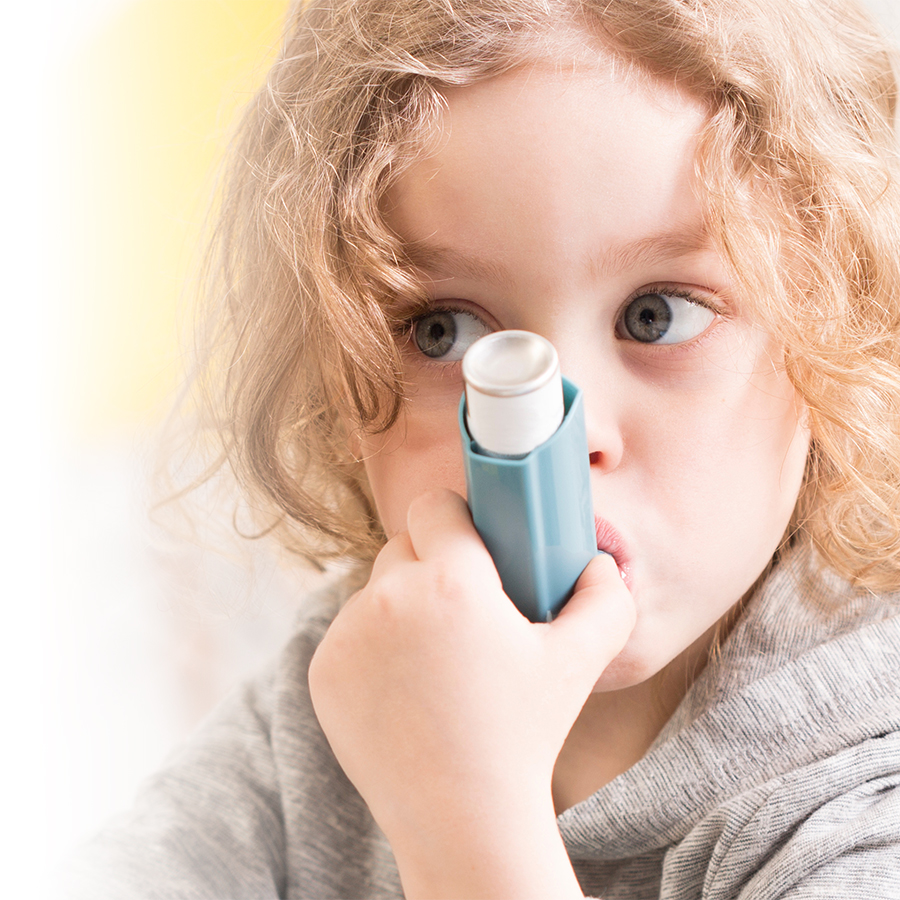Asthma is a health problem that affects many school children. See how to reduce its impact on your child’s school life.
Is your child living with asthma? Did you know that your pharmacist can help them better manage their asthma by adjusting and optimizing their medication, and by helping you develop an effective treatment plan? Read on for more information on asthma management.
Asthma: a common illness in children
In Canada, the incidence of asthma in children has quadrupled in the last decade. This illness is one of the most common causes of hospitalization, medical visits and absenteeism at school.
There are frequently one or more asthmatic students in every classroom. Asthma is a well-known illness, but it is sometimes the subject of preconceived ideas. Yet, it is now possible to live well with this condition.
A child should not miss school, have difficulty functioning normally, be unable to participate in sports or experience any discomfort at school because of asthma.
The treatment of asthma at school
The treatment of asthma involves the use of two types of medications: controller medications and rescue medications. Controller medications must be taken regularly, once or twice a day (morning and/or night). Consequently, it is not necessary for your child to bring this medication to school.
Rescue medications are used to ease acute asthma symptoms. An asthmatic child should always have their rescue medication on hand, whether at school or elsewhere. It can be taken as a preventive measure 15 minutes before physical exertion. Therefore, it is essential that a child have access to rescue medication before recess and physical education classes.
Asthma management by the child
Your child should be made aware of and take charge of their condition from an early age. They should know what their asthma triggers are and learn to recognize them. Your child should also:
- know how to operate the device used to inhale the rescue medication, and
- recognize when it should be used
When your child is at home, under your supervision, let them take the medications on their own, as this will promote autonomy. The more they use the medications on their own, the better they will fare at school! You can also:
- observe your child while they use their medication and correct their technique if it isn’t optimal
- speak to your pharmacist before the start of the school year to check your child’s technique
- discuss the possibility of using a spacer device (valved restraint), if appropriate, to reduce difficulties with coordination and use of the device
Encourage your child to always have their rescue medication close at hand and to ensure that it is accessible to school staff. Frequent reminders at the beginning of the school year will help to establish a routine and to avoid forgetting.
Working together with school staff
Managing asthma is a team effort! The support of your child’s teacher and the school nurse is key. Here are a few tips to make it easier for the staff in charge of your child to work together.
- Inform teachers, nurses, and childcare staff that your child is asthmatic.
- Describe the symptoms to watch for (difficulty breathing, wheezing, coughing, etc.).
- Specify in what situations your child should take their rescue medication.
- Label your child’s rescue medication. If necessary, ask your pharmacist for a label that clearly describes the dose to be administered.
- Make sure that the adults responsible for your child at school know how to administer the rescue medication when it is needed.
- Inform school staff of the factors that could trigger an asthma attack or symptoms in your child, such as physical activity, stress, the cold or contact with animals.
- Clearly identify who to contact in an emergency.
- All this information should be kept in a clear action plan, presented in writing, and given to all the staff members who care for your child. Ask a competent healthcare professional to help you prepare it.
To ensure optimal asthma management at school, a close relationship between your child and all school staff is essential. Everyone involved must be able to take the necessary measures to ensure your child’s health and well-being. Like a music conductor, make sure things run smoothly, so your child’s educational experience is harmonious!
Don’t hesitate to call on your pharmacist’s expertise for additional information about asthma and its treatment.


